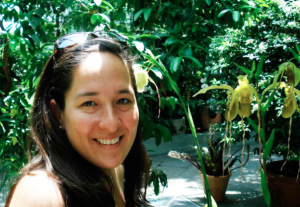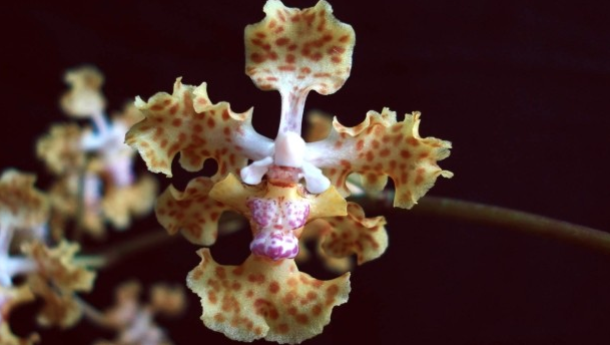+ Spanish
Biologists from the United States and Mexico have described a new orchid species from a mountainous area in central Panama.
PANAMA (08/05/2014)
 Since she was child, Katia Silvera would hike the remote forests of Panama and collect plants with her father, Gaspar, who operates a small orchid company. On one such hike about eight years ago, the father-daughter team collected an orchid that turned out to be new to science. It was just named in their honor.
Since she was child, Katia Silvera would hike the remote forests of Panama and collect plants with her father, Gaspar, who operates a small orchid company. On one such hike about eight years ago, the father-daughter team collected an orchid that turned out to be new to science. It was just named in their honor.
“We collected it thinking it was something else,” said the younger Silvera, who has a three- year Tupper Fellowship at STRI “When it bloomed in the greenhouse we realized we had no idea what it was.”
Lophiaris silverarum was formally described by Germán Carnevali, a Mexico-based orchid expert. Found in only small areas of Central Panama — in the provinces of Coclé and Veraguas — the species description was published in March in Phytotaxa.
Katia explained that difficulties in finding enough orchid material for analysis made the already long process of naming a new species even more drawn out. Yet after a series of studies including traditional morphological comparisons and DNA research, the scientists concluded they had found a new orchid.
“It’s difficult to find them. We do a lot of hiking at looking for plants and it took years to find this one,” she said. “It was a long process but it was very exciting to be a part of it.”
Silvera, who has conducted research at STRI since she was a botany undergraduate at the University of Panama, said coming across orchid species she is unfamiliar with — Panama has some 1,100 of the world’s roughly 30,000 orchid species — is normal, but a couple days of research in either the STRI or university herbarium usually turns up a name.
Silvera’s research at STRI focuses on the evolution of photosynthesis in orchids. In collaboration with STRI staff scientist Klaus Winter, she has discovered that many orchids use CAM photosynthesis, the same pathway used by many succulent plants to reduce water consumption in dry climates.
“A lot of people who study plants don’t like to study orchids because they are difficult to identify,” said Katia. As well as being the most numerous plant family in the world, many are hard to distinguish based on morphology alone. New genetic techniques often determine distinct species were wrongly classified and are constantly in need of renaming — in the course of Silvera’s five- year doctoral studies, one orchid she studied had its scientific name changed three times. “I grew up surrounded by orchids.
I have fascination for plants, especially orchids, and I can learn about them really well.”
http://www.stri.si.edu/english/about_stri/headline_news/news/article.php?id=1804
check out our store!!
(click on the image)

